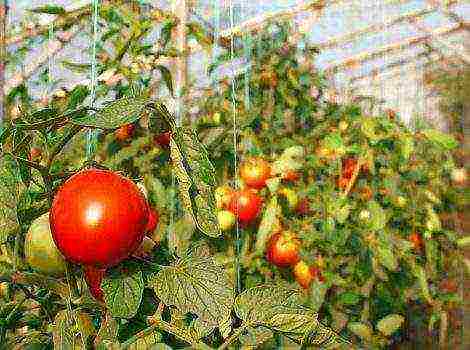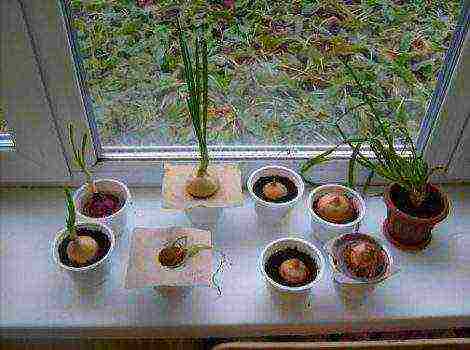Content
- 0.1 How to hatch chicks in an incubator: laying eggs
- 0.2 Care and maintenance of chicks after incubation
- 1 Selection of eggs
- 2 Defective
- 3 Incubation period
- 4 How to choose chicks when buying?
- 5 Is it better to grow with a hen or in an incubator?
- 6 Conditions of detention
- 7 Food
- 8 How to determine the gender of a chicken: chicken or rooster?
- 9 Methods for determination in poultry farms
- 10 How do you determine your age?
- 11 Diseases of chickens
- 12 Diarrhea in chickens
- 13 Worms
- 14 Disease prevention
 How can you hatch chicks in an incubator? Raising chicks in an incubator is a skill-driven process in the poultry industry. Every Farmer Should Know how to use the incubator.
How can you hatch chicks in an incubator? Raising chicks in an incubator is a skill-driven process in the poultry industry. Every Farmer Should Know how to use the incubator.
With the right approach, you can organize a small business for breeding select chicks. But incubation should not be taken lightly: some novice poultry farmers receive a brood of 50 or 30% of the total egg set.
Collection and storage of eggs for incubation
 Collecting eggs correctly plays an important role in the subsequent incubation. The nests must always be clean and dry so that the eggshell does not absorb bacteria. The collection of the product should be carried out 3-5 times a day. Wash your hands thoroughly before collecting eggs.
Collecting eggs correctly plays an important role in the subsequent incubation. The nests must always be clean and dry so that the eggshell does not absorb bacteria. The collection of the product should be carried out 3-5 times a day. Wash your hands thoroughly before collecting eggs.
Material that has lain for more than 18 hours is not suitable for hatching chicks. The technique of removing eggs from the nest also has its own nuances: the product must be taken with two fingers at the blunt and sharp ends.
If the chicken has just laid the egg and it is still warm, there is a protective film on the surface. By touching the whole egg, you can damage this film and bring in pathogenic bacteria inside.
Only laid eggs can not be wiped with a dry cloth, as well as washed with running water. Dirty eggs are best discarded immediately. If the number of eggs is limited, then you can wash them in a weakly diluted lime solution. Lime prevents mold from spreading inside the shell. Of course, it is best to avoid this procedure.
Storage.
- Eggs for setting in the incubator should be stored for a maximum of 5 days at 12–16 ° C. Humidity plays an important role during storage. It should be 70-80%. At temperatures below 6 ° C, the embryo "falls asleep". Such an egg will not develop. Conversely, at very high temperatures of 25-30 ° C, the egg begins to develop intensively with numerous pathologies.
- The material is stored in special trays with the sharp end down. In this position, the "air cushion" will not move sideways or downward. Eggs are rotated every 2–3 days at an angle of 90 ° to prevent the egg from stagnating. A dried-up embryo is not able to develop.
- There should be no temperature drop in the place where the material is stored.The room needs to be ventilated from time to time.
Preparing a home incubator for hatching chicks
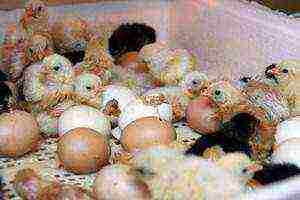 Before hatching chicks in the incubator, it needs to be completely cleaned of previous bookings. All feathers and dirt are removed from the surface of the incubator. During the cleaning process, the home incubator is completely disassembled into parts. The grates are thoroughly washed with a brush and laid out until completely dry in direct sunlight.
Before hatching chicks in the incubator, it needs to be completely cleaned of previous bookings. All feathers and dirt are removed from the surface of the incubator. During the cleaning process, the home incubator is completely disassembled into parts. The grates are thoroughly washed with a brush and laid out until completely dry in direct sunlight.
Before hatching the young, the incubator must be washed with soapy water with the addition of iodine. Iodine disinfects the work surface from bacteria. Another more time consuming method can be used to disinfect the incubator - fumigation. This method is less popular when cleaning incubators. To use fumigation (smoke treatment), it is necessary to ensure complete isolation of the incubator, as well as the room itself, where the treatment will take place.
Ingredients:
- Formaldehyde 40% - 20 ml
- Manganese - 20 gr. per 1 square meter.
After processing the incubator with formaldehyde, the room must be well ventilated. This processing method is too aggressive, so not all poultry farmers want to use this method. Before proceeding with disinfection, you need to make sure that the chicks are resistant to such treatment. The embryos of some breeds of birds do not tolerate such procedures.
Usually, formaldehyde disinfection is carried out only in extreme cases, if various kinds of infections appear in the incubator, which lead to the death of the offspring.
How to identify the gender of a chicken when sampling material in an incubator
- Roughness at the sharp end of the testicle. In some eggs, the sharp part is smooth, while in others it is rough. It is by this roughness that the sex of the chicken can be determined. Cocks hatch from eggs with a rough end, and layers hatch from material with a smooth shell at the end.
- Circles on the sharp side of the testicle. If there are no such circles, a chicken will emerge from the egg. Conversely, if there are circles, you can wait for a rooster.
Laying eggs
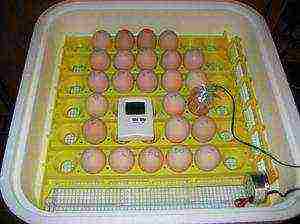 Before placing in the incubator, the eggs are checked for chips, cracks, and shell thickness. An ovoscope is used to accurately determine the integrity of the egg.
Before placing in the incubator, the eggs are checked for chips, cracks, and shell thickness. An ovoscope is used to accurately determine the integrity of the egg.
It can be made with your own hands or purchased in specialty stores. The ovoscope is a wooden box with an incandescent lamp inside.
On the upper surface of the device there is a hole in which the egg is placed.
Transillumination reveals:
- fatty yolk;
- dried embryo;
- location and size of the air sac;
- shell chips and microcracks.
Bird eggs are laid horizontally in the incubator. They will warm up better and more evenly. Large eggs can be laid vertically on the sharp end, tilted slightly to the side. If eggs of different birds are laid in a home incubator, for example, geese, ducks and chickens. At the very beginning, a larger product is laid, then medium and small. The interval between laying should be at least 5 hours. When laying out, it is necessary to take into account the incubation period, because chickens hatch faster than geese and ducks.
Hatching period
| Ducks | 26-33 days |
| Geese | 28-33 days |
Incubation conditions
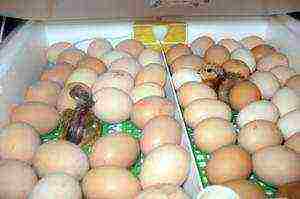 During the entire incubation period, the eggs must be turned. As needed, water is added to the special compartments of the incubator.
During the entire incubation period, the eggs must be turned. As needed, water is added to the special compartments of the incubator.
- Manual mode... To hatch offspring in such an incubator, you will have to turn the eggs manually. The downside is the constant opening of the lid of the device, which leads to temperature changes.
- Mechanical mode... The turning of the eggs is done with a wire. The wire moves the net and the eggs turn over to the other side.
- Auto mode... In expensive models of incubators, the revolution takes place with the help of a motor.
The temperature inside the incubator must be measured with different thermometers, since all thermometers have different errors.
The eggs should be turned over at regular intervals, in the first days of incubation they are turned over every 2 hours.After 7 days, the eggs must be checked with an ovoscope to identify defective and fatty eggs.
For 10-14 days, continue to turn the eggs. The humidity can be reduced slightly.
On the 16-18 day, the incubator must be ventilated, 2-3 times a day, briefly open the lid for ventilation. The ovoscope will determine the complete filling of the egg with the embryo. Frozen embryos are also discarded. This week you can already hear the chicks squeaking.
On days 19-21, the temperature should be lowered to 37.5 ° C. The humidity rises to 70%. At this stage, the eggs are no longer turned over. Chicks begin to hatch. It is not necessary to remove chicks from the incubator until they are completely dry.
Important! In the last days, when turning of eggs is no longer required, the grate between them must be removed so that the chicks do not break their legs against it.
Care of young animals immediately after hatching
It is important to properly care for the young after the incubation period.
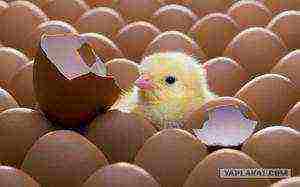 Content... If the farm has hens, then it is better to put chickens under it. In this temperature regime, young animals will be most comfortable. If there are no hens, then it is necessary to provide a comfortable environment. Before starting to hatch chicks, it is necessary to equip a temporary house. This can be a guardrail, a cardboard box, or a wooden box. The place for chicks should not be on the floor. There should be soft, dry bedding at the bottom of the box. Daylight hours for chicks in the first days is 24 hours. In the second month of life, you can limit yourself to 10-hour daylight hours. In the first week, the temperature regime is 28-32 ° C. Second week - 27 ° C. Every next week, the temperature should be lowered by 3 degrees.
Content... If the farm has hens, then it is better to put chickens under it. In this temperature regime, young animals will be most comfortable. If there are no hens, then it is necessary to provide a comfortable environment. Before starting to hatch chicks, it is necessary to equip a temporary house. This can be a guardrail, a cardboard box, or a wooden box. The place for chicks should not be on the floor. There should be soft, dry bedding at the bottom of the box. Daylight hours for chicks in the first days is 24 hours. In the second month of life, you can limit yourself to 10-hour daylight hours. In the first week, the temperature regime is 28-32 ° C. Second week - 27 ° C. Every next week, the temperature should be lowered by 3 degrees.- Feeding... The water in the drinking bowl is changed as it gets dirty. You need to choose only high-quality feed, designed specifically for the smallest chickens. The diet requires vitamins, fish oil. Some poultry farmers feed in doses to prevent overeating. Greens, cottage cheese, milk whey are added to the feed. It is not necessary to moisturize the food too much so that it does not sour.
Diseases of chickens
After hatching, it is important to take into account the conditions of detention in order to prevent various diseases. With improper feeding, chickens may develop vitamin deficiency, food poisoning. If the conditions are far from ideal, then babies can get sick with salmonellosis, typhoid. Broiler chickens often vilify if Salmonella bacillus enters the immature organism of the future chicken. This disease appears very quickly and proceeds rapidly. Highlighting white.
Yellow diarrhea can "speak" of hypothermia, stress, infection. Traditional methods are used for treatment. The room is disinfected.
Bloody diarrhea is the most dangerous symptom. All birds can die from it. This disease is called coccidiosis. For treatment, veterinary drugs and room disinfection are used. Correct and timely care of the brood will allow you to grow healthy and energetic chickens.
 Breeding chicks is a profitable business that does not require a lot of time. Anything is possible if you have the right skills. Most farmers resort to incubation as an excellent way to raise their chicks. From our article you can find out how you can hatch chicks yourself in an incubator. What breeds of chickens can be hatched by incubation at home. And how to properly lay eggs in the incubator. But a particularly important task is not only to raise chickens in the incubator, but also to properly maintain them until they are a week old, so that they get stronger.
Breeding chicks is a profitable business that does not require a lot of time. Anything is possible if you have the right skills. Most farmers resort to incubation as an excellent way to raise their chicks. From our article you can find out how you can hatch chicks yourself in an incubator. What breeds of chickens can be hatched by incubation at home. And how to properly lay eggs in the incubator. But a particularly important task is not only to raise chickens in the incubator, but also to properly maintain them until they are a week old, so that they get stronger.
Breeding chicks in an incubator at home
At home, it is possible to raise chickens for yourself and for sale. These can be meat chicks or egg chicks. The popular ones include the following names breeds.
- Brama chickens.
- Chickens master gray.
- Kuchinsky yellow chicken.
- COBB Eggs - 500.
Each of the chick breeds performs well during the incubation period. Cultivation takes place according to the standard scheme, which you will learn about a little later.
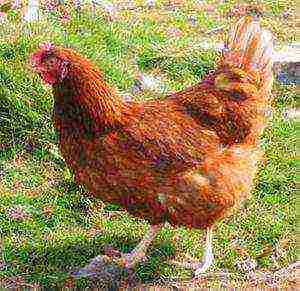 Chickens Lohman Brown Are small yellow chicks hatched from an egg. They are distinguished by the fact that they do not inherit the qualitative trait of their parents. This feature arises as a result of the selection of this breed. In order to preserve all the characteristics of the breed, it is worth creating unusually whimsical conditions for keeping the young. There are rare cases when the effectiveness of such a breeding at home occurs. As a rule, Lohmann Brown is grown commercially on specialized livestock farms. You can buy eggs of this breed on such farms. You can buy either chicks or hatching eggs, which are sold at genetic poultry farms.
Chickens Lohman Brown Are small yellow chicks hatched from an egg. They are distinguished by the fact that they do not inherit the qualitative trait of their parents. This feature arises as a result of the selection of this breed. In order to preserve all the characteristics of the breed, it is worth creating unusually whimsical conditions for keeping the young. There are rare cases when the effectiveness of such a breeding at home occurs. As a rule, Lohmann Brown is grown commercially on specialized livestock farms. You can buy eggs of this breed on such farms. You can buy either chicks or hatching eggs, which are sold at genetic poultry farms.- Breeding chickens COBB-500 is the most popular destination within Russia. This is directly related to the fact that there is a high survival rate of chicks. Broiler chickens can survive up to 97% by hatching. Chickens of this breed have a yellow skin color and quickly gain weight. You can slaughter chickens upon reaching one month. The incubation process follows the standard scheme described in this article.
Breeding chicks in an incubator at home: choosing an incubator
The primary concern for a chicken farmer is choosing an incubator. Such a device replaces the hen for chickens. But in order for the chicks to hatch from the eggs, the incubator must meet certain requirements. It stands to them carry:
- Maintaining the required temperature and protecting the incubator from temperature drops.
- The incubator must have a proper level of humidity.
- Airing function.
- Automatic mode support.
- Flip function of the egg tray.
An automatic egg device is expensive, but it frees the farmer from all the hassle of this job. But there are other, more economical incubator options. This is a DIY incubator or a mechanical incubator.
Hatchery Chicks: Egg Selection Criteria
In order to raise decent chickens, you must follow all the rules of the incubation period. But to hatch chicks, you need to select the right eggs. It is necessary to make sure that the egg from which it is planned to hatch the chick was laid by a healthy hen. Therefore, before placing the eggs in the incubator, you should carefully examine them. We offer you a basic list of what to look for Attention.
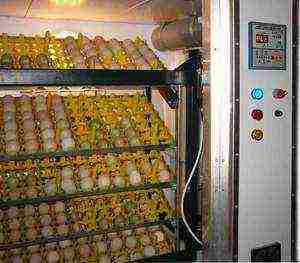 No egg smell. And also any pungent smell should alert you. The smell of mold is especially dangerous.
No egg smell. And also any pungent smell should alert you. The smell of mold is especially dangerous.- Egg size. The egg should be 50-60 grams. A frail chicken will hatch from an egg that is too small, and a yolk one from a large egg.
- When choosing an egg, you should pay attention to the shape. It should be smooth and even. Do not lay an egg that has bumps and a dent. Also, do not put eggs in the incubator that are round or oblong.
- The freshness of the egg plays an important role. The egg must have been laid no more than seven days ago. Also, do not put eggs in the incubator that have been stored below ten degrees Celsius.
- Any damage to the surface of the egg is considered unacceptable. Cracks, dents in the shell should be avoided. Large amounts of stains and dirt are also considered unacceptable.
It is strictly forbidden to wash or wipe the surface of the shell before laying eggs. In addition, there is a special device that helps many farmers to determine the required characteristics of the egg. The ovoscope accurately locates the yolk and air sac. In a good egg, the yolk is located in the middle or closer to the blunt edge. The air bag can be located close to the blunt end.In addition, the ovoscope allows you to select only the best eggs and see the pathology in the development of the embryo. Most frequent pathology This:
- Spots of various colors and shapes indicate the presence of bacteria on the egg.
 Bacterial tumac - damage by putrefactive bacteria may indicate that the egg is of an opaque appearance.
Bacterial tumac - damage by putrefactive bacteria may indicate that the egg is of an opaque appearance.- An egg with a pungent odor and a yolk that has adhered to the shell indicates the presence of a dryness.
- A blood blotch can serve as a signal of pathology.
- The presence of krasyuk indicates a homogeneous structure of orange color and difficult viewing of the location of the yolk and air chamber.
- The fact that the scraped shell was damaged may be evidenced by a leak in the egg.
How to hatch chicks in an incubator: laying eggs
The main thing is temperature eggs when laying it in the incubator. The optimal indicator is a temperature of twenty-five degrees Celsius. It is recommended to keep the eggs in a warm place before setting. In addition, before laying eggs, it is necessary to clean and disinfect the incubator.
And also the incubation mode is checked in advance. It is worth noting that the temperature when laying should be thirty-six degrees. Eggs should be laid with the blunt end up. In the event that you have a mechanical incubator installed, you need to monitor the slope of the tray, its temperature and humidity.
But if you are a happy owner of an automatic model of this device, you do not need to check each of the above parameters. In the event that the tray is turned 180 degrees, it is possible to lay eggs horizontally. It is best to lay eggs after 6 pm. It is recommended to start with a large egg. After four hours, you can lay out the medium ones, and after another four hours the smallest ones. Thus, the offspring can be considered homogeneous.
How to use an incubator: incubation process
It should be noted that the incubation period is divided into four stages. Withdrawal continues for twenty one days. The first stage takes place over seven days. The second stage is from the seventh to the eleventh days. The third stage lasts until hatching chicks. The fourth is the birth of chicks. Let's consider each of the stages in turn.
First stage
At the first stage, all the necessary organs are formed in the chick. In the first three days, it is necessary to maintain the temperature regime at a level of up to 38 degrees Celsius. It is especially important to maintain a normal humidity level, which should be 70%. On the fourth day, the temperature regime drops to thirty-seven and a half degrees, and the humidity drops to 55%.
In the event that you use a mechanical incubator, then it cannot turn the tray over, then it is worth performing the necessary turns up to three times a day. Each time the coup must be carried out at the same time. Carefully turn the tray over. In order not to forget when the previous turn was made, it is best to make a mark on the egg.
Second phase
At the second stage, the skeleton, claws and beak are formed in the chick. In order for the embryo to develop normally, it is necessary normal temperature 36-38 degrees with humidity up to 45%. In this case, the overturning continues three times a day at the same time intervals.
Stage Three
At this stage, the embryo has a fluff and a stratum corneum on the claws. The temperature drops to 37 degrees, the humidity is kept at 70% and in some cases can be increased. The main thing, at the third stage, is ventilation holes. At this stage of development, the embryo should receive a good supply of air.
It is necessary to use an ovoscope at this stage, because then a scheduled check is carried out. The circulatory system may be considered. On the twentieth day, the eggs are turned on their side so that there is a large amount of space.
Fourth stage
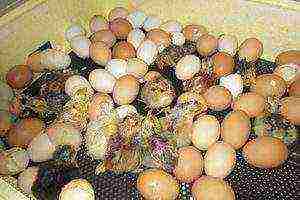 At this stage, the chicks can be seen hatching. The chickens tear open the air sac, and then the shells. At first, he captures the air, and then utters a squeak. In the cut of the minute, the chick opens eye sockets and they come out of the shell. As soon as the chicks hatch, they are moved under the hen or in a special place - a brooder.
At this stage, the chicks can be seen hatching. The chickens tear open the air sac, and then the shells. At first, he captures the air, and then utters a squeak. In the cut of the minute, the chick opens eye sockets and they come out of the shell. As soon as the chicks hatch, they are moved under the hen or in a special place - a brooder.
Inspection of hatched chicks
After the chick is born, after six hours it should be examined. If the chicks were raised as a beef breed, then it is recommended to examine them after ten hours.
A healthy chick should have the following external signs.
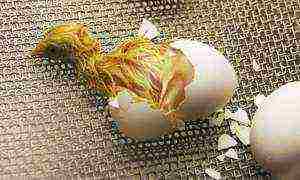 Absence of traces of blood, the umbilical cord is closed.
Absence of traces of blood, the umbilical cord is closed.- The chicken should have a yellow sheen. The coat should be soft to the touch.
- The eyes are clear and not cloudy.
- The beak must be firm.
- The wings should fit snugly against the body.
- The chick should be active and respond well to noise.
When the sex of the chick is important to the breeder, there are several ways to define his.
- The chick must be taken by the scruff or legs. The cockerels hang, calm, and the hens will draw their paws and pull their heads up.
- During incubation, only the hens hatch first.
- The chicken has long feathers that alternate with short ones. The rooster is distinguished by the presence of only short feathers.
In livestock complexes for determining the sex of the chick. The chick's cloaca is examined for a tubercle.
It will be useful for a novice farmer to know how to determine floor the future chicken in the egg.
- The shell is the main way to determine the sex of a future chick. For this, it is probed and if a tubercle or ring was found on palpation, then a rooster will hatch from the egg.
- The ovoscope can also indicate the future sex of the offspring. This can be determined by the position of the air bag. If it is centered, then a male representative will hatch.
Care and maintenance of chicks after incubation
Incubating chicks is a great way to save time and money. But after the offspring are bred, it is especially important to keep and care for the chicks before they get stronger, namely in the first week of their life.
If a chicken was born with the help of a perch, then, of course, his mother takes care of him - this is a chicken. But if - this is an artificial method - an incubator, then care falls on the shoulders of the breeder. It is worth noting that the first days the chicks are kept in a box. But it is also important to follow certain rules that will help grow healthy chicks.
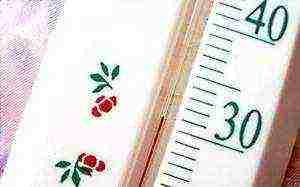 Mode temperature... It is worth remembering that future birds should be at a temperature of thirty degrees. After five days, it can be reduced to twenty-eight degrees.
Mode temperature... It is worth remembering that future birds should be at a temperature of thirty degrees. After five days, it can be reduced to twenty-eight degrees.- Birds must have access to light around the clock.
- If the birds live in a box, then they need to be constantly looked after. The box should contain purely... Therefore, at the bottom it is necessary to lay a soft cloth, which must be changed daily. After five days, it is best to move the chicks to a cage with a good floor and a dung shield.
- The number of chicks per square meter should not exceed thirty heads. It will probably be possible to increase the space from the age of four weeks.
- The first feeding of the chicks should be done twelve hours after the chicks have hatched. The first meal can be corn grits. On the second day, you can give semolina, wheat porridge. It is also possible to give the chicks low-fat dairy products. On the third day, greens can be introduced into the diet. In order for the chicken to eat grass, it is best to scald it with boiling water and mix with porridge. Feeding is best done every two or three hours.
- It is imperative to water the chicks. The main thing is availability drinkers in a box of clean water. In the first hours of life, the chicks are given a glucose solution. Over time, it is poured into yogurt or other dairy products.
There is only one conclusion, raising chickens in an incubator with your own hands is not a simple, troublesome business. It takes a lot of time. The only way out for busy farmers is an automatic incubator that does all the work for you. With such a device, it is possible to achieve the effect in the shortest possible time.
>
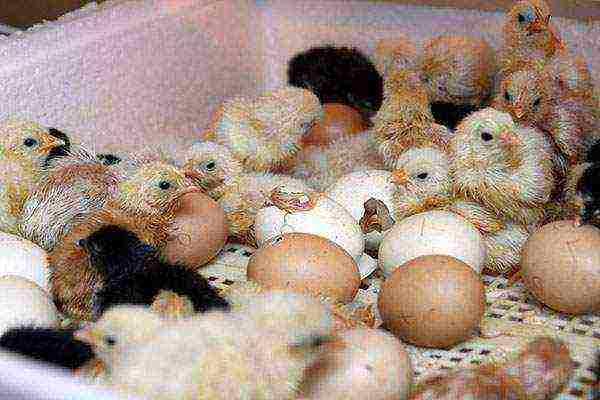 The incubation period is a crucial time, you need to control the temperature and humidity on a daily basis, as well as air and turn the eggs in a timely manner. Beginners are intimidated by this responsibility, so we present a set of rules describing the hatching of chickens in an incubator at home. Please note that all recommendations are mandatory, otherwise some of the chicks will die in the bud.
The incubation period is a crucial time, you need to control the temperature and humidity on a daily basis, as well as air and turn the eggs in a timely manner. Beginners are intimidated by this responsibility, so we present a set of rules describing the hatching of chickens in an incubator at home. Please note that all recommendations are mandatory, otherwise some of the chicks will die in the bud.
Selection of eggs
 Success in business depends not only on the efforts of the owner, but also on the quality of the eggs. Therefore, before hatching chicks correctly in the incubator, pay attention to their selection. Interestingly, the process of hatching chickens must begin with the chicken. Indeed, you need to make sure that she is not sick with anything and does not have any genetic diseases. Otherwise, the genetics of the chicks will also be disrupted. Next, we pay attention to the eggs, the quality indicators are as follows:
Success in business depends not only on the efforts of the owner, but also on the quality of the eggs. Therefore, before hatching chicks correctly in the incubator, pay attention to their selection. Interestingly, the process of hatching chickens must begin with the chicken. Indeed, you need to make sure that she is not sick with anything and does not have any genetic diseases. Otherwise, the genetics of the chicks will also be disrupted. Next, we pay attention to the eggs, the quality indicators are as follows:
- odorless, possible deviations - moldy, pungent, grape, putrid and other odors;
- freshness - with a shelf life of no more than 5-7 days;
- correct storage - at a temperature not lower than 10-12 ° C, those who have been in the refrigerator must be disposed of;
- optimal shape - for chicken eggs it is an oval shape slightly narrowed on one side, without outgrowths, indentations. Spherical or overly elongated are also subject to marriage;
- no damage - carefully check the shell for cracks and dents, dirty dried spots are permissible only in small quantities;
- optimal weight (50-60 g) - weak chicks often appear from small ones, and large ones turn out to be with two yolks.
The egg shell is porous so that air can penetrate through it, and also has its own microflora. It is strictly forbidden to wash or wipe the eggs.
When checking eggs, they must be scanned with a special device - an ovoscope. When translucent, pay attention to the difference in shades of the content. You need to find the yolk and air chamber. The yolk should be in the center or slightly close to the blunt end. You cannot take an egg in which the yolk is adjacent to the inside of the shell. The air chamber must be at the blunt end. The normal volume for her is about a teaspoon. An egg with a small air chamber will not work.
Defective
During selection, as well as during the hatching period of chickens in an incubator at home, it is necessary to inspect the contents and dispose of eggs with developmental pathologies. Before hatching chicks in the incubator, remember the possible irregularities during embryo maturation.
Stains
Usually appear under the shell, caused by various bacteria. The spots can be of various shades and sizes.
Tumac bacterial
A type of infection by putrefactive bacteria, in which the protein liquefies and becomes greenish. At the same time, the egg is opaque.
Drying
With this pathology, the yolk floats and dries to the inside of the shell. At the same time, the egg may have a pungent smell.
Bloody stain
In this case, blood inclusions are present on the surface of the yolk or in the protein.
Krasyuk
During ovoscopy, the contents look uniform with a reddish tint. The yolk and air chamber are not visible.
Tyok
Pathology develops after damage to the shell membrane during storage for more than one day.
With any of these pathologies, the egg must be disposed of; you cannot fry or cook them for eating.
Incubation period
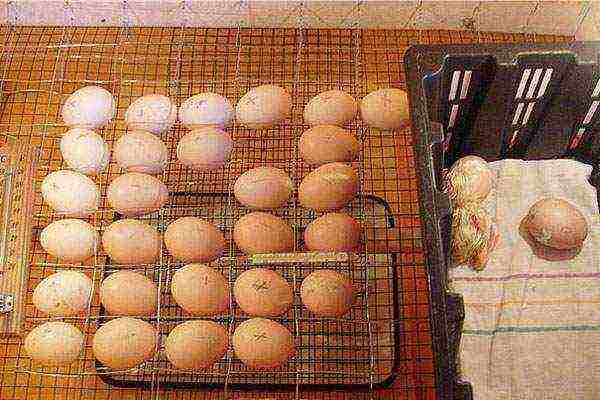 From the moment the eggs are laid, their incubation begins. The incubation period ends after the last chick has bite. Breeding chicks in an incubator differs from breeding goslings in terms of incubation, maintaining temperature and humidity.
From the moment the eggs are laid, their incubation begins. The incubation period ends after the last chick has bite. Breeding chicks in an incubator differs from breeding goslings in terms of incubation, maintaining temperature and humidity.
Loading eggs into the incubator
Before leaving chicken eggs in the incubator at home, prepare them and the incubation chamber of the appliance. The inner chamber of the device is thoroughly disinfected and ventilated. While preparing the incubator for hatching at home, it is best to leave the eggs at room temperature for 8 hours to warm them up gradually and evenly. It is advisable to mark the blunt and sharp end with a pencil with a cross or zero. This will help in controlling the overturning of the masonry.
Controlling incubation conditions
The temperature and humidity in the chicken egg incubator must be controlled every hour. Even a slight change (0.5-1 ° C) will lead to a slowdown in the growth or death of embryos. After loading the eggs, the temperature should rise to 37 ° C in 3-4 hours. During the entire incubation period, the temperature and humidity will change several times.
Incubation schedule
The maturation of embryos is divided into 4 stages, they are briefly given in the table of incubation of chicken eggs in an incubator.
Stage 1 - from 1 to 7 days... The heart, circulatory system and the rudiments of internal organs are being formed. During this period, ventilation is not required, but by the end the embryo already needs oxygen. The most optimal temperature is 37.8 ° C. Humidity is maintained around 55%. Eggs need to be turned every 6 hours, that is, 4 times a day. At the same time, it is highly discouraged to open the incubator.
It is better to equip the incubator with a tray with automatic egg turning.
Stage 2 - from 8 to 14 days... During this time, the skeleton and beak are formed in the embryo. The temperature is the same as in the previous period, but the humidity is reduced in stages over 3-4 days to 45%. You need to change the position of the eggs every 4 hours - 6 times a day. It is also required to air the eggs for oxygen supply, this must be done 2 times a day for 5 minutes.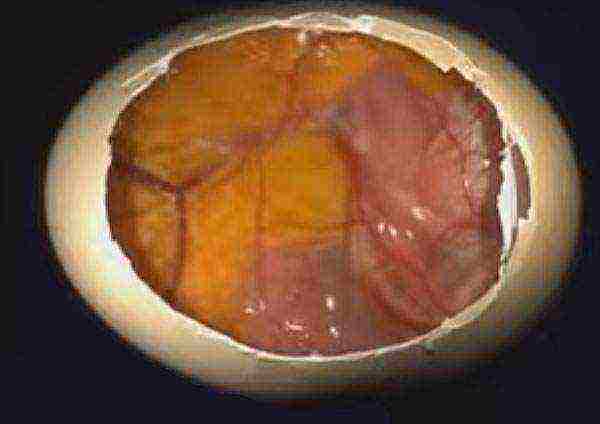
Stage 3 - from 15 to 18 days. It is also necessary to turn the eggs 6 times a day, while the airing is increased to 15-20 minutes, also 2 times a day. The humidity is increased to 50%, the temperature is made the same. At the end of the period, with successful hatching, the chickens begin to make barely audible sounds and turn over in the egg.
Stage 4 - from 19 to 21 days. First of all, they stop turning the eggs, the chickens are strong enough and do it on their own. Reduce airing time to 5 minutes twice a day. The humidity is increased to 65%, the temperature is reduced to 37.3 ° C. At the end of this period, the chicks hatch in the incubator.
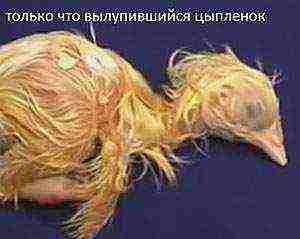 If you follow all the above rules and monitor the operation of the devices, then the brood will turn out to be numerous. From small eggs, chicks are selected first. After hatching, the chicks are allowed to dry out, gain strength, after which the chicks from the incubator move under the hen or heater. Conditions in it are not suitable for chicks. After all chicks hatch, the incubator is cleaned and disinfected.
If you follow all the above rules and monitor the operation of the devices, then the brood will turn out to be numerous. From small eggs, chicks are selected first. After hatching, the chicks are allowed to dry out, gain strength, after which the chicks from the incubator move under the hen or heater. Conditions in it are not suitable for chicks. After all chicks hatch, the incubator is cleaned and disinfected.
Control and probable complications
Even the highest quality incubators and responsible owners are not immune to emergencies. To protect yourself and your eggs from power outages, purchase incubators with a spare power source. If the offspring overheat, you need to open the incubator for a while and cool the eggs. In case of hypothermia, you can cover the camera for 2-3 hours with hot water pads. Slight fluctuations in temperature and humidity will not kill the young, but all these procedures must be carried out immediately.
Of course, the egg grooming schedule must be followed, and you also need to closely monitor how many days the chicks hatch in the incubator. The noughts and crosses on the eggs should help you navigate the turning of the eggs.
It is also necessary to control the development of the chickens with an ovoscopy. All defective eggs must be disposed of immediately. It is recommended to perform transillumination on the 6th and 11th day. On the sixth day, the blood vessels and heart should be visible.On the eleventh day, the egg on the sharp side should darken.
Breeding chickens in a simple incubator - video
Chicken meat, chicken eggs are healthy foods that everyone has on the table. Therefore, raising chickens is not only a profitable business, but also a payback. However, before deciding to start breeding chickens, it is still worthwhile to study in detail all the nuances of breeding chickens, keeping and growing.
In this article we will talk about raising chickens at home for beginners, learn how to raise chickens, why chickens vilify, what to give broilers for diarrhea and other pressing issues.
How to choose chicks when buying?
Raising chickens from an incubator at home is a profitable business, because in addition to meat and eggs, bird feathers and manure can be successfully used as an organic fertilizer. But in order for this business to be beneficial, it is necessary to choose the right chickens.
The best time to buy chickens is April-May.... It is advisable to purchase day old chicks. It is better to buy chicks at poultry farms, because in these places there are guarantees that the individuals are healthy and strong. However, in order to choose chickens, you need to know the nuances of selection depending on the age of the individuals.
Daily
In order not to be mistaken and to acquire healthy day old chicks during the purchase, you need to pay attention to a number of criteria for the appearance of young individuals:
- The chick must be dryhealthy and active;
- The down should not be sticky. In appearance, he must be fluffy, free from dirt and foreign debris;
- At the day-old calves at the time of sale the umbilical cord must be overgrown;
- Be sure to carefully examine the umbilical cord. If there are secretions on it, then this young growth is not worth buying. Discharge is the first sign of an infectious disease;
- The cloaca must be clean, pink in color with a moist texture. There should be no dirt, traces of droppings on it;
- The chicks should have reaction to sounds;
- The back should be straight;
- The head should be straight;
- Smooth and correct beak with a pigmented structure.
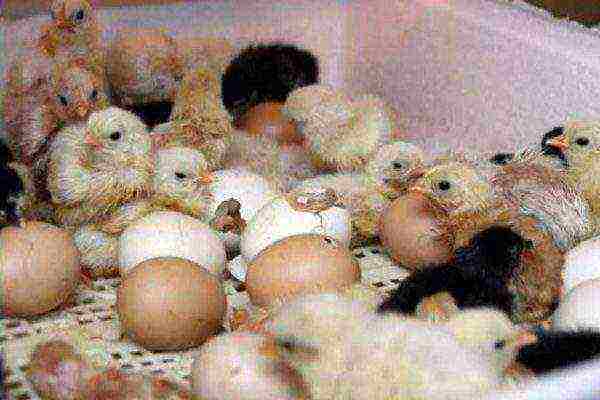 Newly hatched broiler chicks
Newly hatched broiler chicks
Weekly
Sometimes poultry farmers buy one week old chicks to save money and time. However, this is not always the correct and correct decision. Young individuals at this age are susceptible to diseases. In addition, their body is weak and weak.
But if you do decide to purchase weekly chickens, you should consider the following selection criteria:
- Individuals must be active and healthy;
- The plumage should be fluffy without dirt, traces of droppings;
- The abdomen should be soft to the touch;
- The head is straight, proportional;
- The beak is straight with a pigmented structure;
- Good response to sounds;
- Should already be worked out pecking reflex;
- The wings should be tightly attached to the body;
- The cloaca should be clean, pink and free from dirt and secretions.
Monthly
Chicks one month old are rarely purchased for divorce. Still, some farmers believe that during this period, individuals survive better and they have developed immunity to infectious diseases... Perhaps this is so, but you should not trust this criterion. Sometimes monthly individuals get sick much more often.
In any case, the criteria for choosing monthly chicks are the same:
- Activity and mobility;
- Good response to sounds;
- Plumage - fluffy, without dirt, droppings, with a smooth structure;
- The abdomen should have a soft texture to the touch;
- The head must be level and proportional;
- The beak should have an even outline with a pigmented structure;
- The chicks should already have a well-developed pecking reflex;
- It is worth paying attention to the wings, they should be tightly pressed to the body;
- The cloaca should be clean, pink, and free from droppings and secretions.
 Newly hatched chicks in the pen
Newly hatched chicks in the pen
Is it better to grow with a hen or in an incubator?
Features of hatching chickens with a hen for beginners
How to grow a chicken from an egg at home without an incubator? Some experienced farmers prefer hatching eggs under a hen because it is a natural process.
It is worth noting that identifying a chicken that is ready to hatch is straightforward. It is advisable to pay attention to the behavior of chickens. If suddenly the chicken does not get out of the nest for a long time or stays there for the night, then this probably indicates that the instinct of incubation has awakened in it.
But do not immediately lay eggs under it, it is advisable to observe the behavior of the individual for some time... It is necessary to let the chicken sit. A ready-made chicken for incubation, when pulled out of the nest, emits bubbling sounds and is torn with all its might back to incubation in the nest. In this case, raising day-old chicks at home will be quite economical.
Depending on the weight of the individual, 11 to 21 eggs are laid under it. The incubation area must be separated from the rest of the chickens. You can use a separate cage for the nesting site, or place the nest in a dark corner of the chicken coop.
Be sure to feed the henso that she does not die of hunger and exhaustion, which often happens. It is necessary to forcefully remove the chicken from the nest and feed and water it 2 times a day.
Chicks with a hen hatch in 20-21 days. Sometimes there are cases when a brood hen, without waiting for complete hatching, can throw the remaining eggs and go for a walk with the already hatched individuals. Therefore, to prevent these unpleasant problems, those individuals that have already hatched are placed in a box or in a warm place, a lamp is first installed above them. On days 22-23, the family unites.
Pros:
- Natural process;
- High survival rate;
- Chicks from the moment of hatching and in the subsequent period are together with the hen;
- Economical. This method will require fairly low financial costs.
Minuses:
- Long process;
- Low number of hatching chicks per season;
- There is a likelihood of pecking eggs by a brood hen during incubation;
- Chicks can be hatched in this way only once a season and only in warm weather.
 Feeding broiler chicks hatched in an incubator
Feeding broiler chicks hatched in an incubator
Features of raising chickens in an incubator at home and feeding them
Breeding chickens using an incubator is in great demand, and this is evidenced by the advantages of growing chickens after an incubator, among which the main ones should be highlighted:
- Beneficial use. In one season, the incubator is used up to 10 times;
- Simple use... This device is easy to handle, does not need to be fed, watered, and there is no need to worry that the brood hen will peck the eggs;
- You can lay from 50 eggs and more at a time;
- Breeding chicks all year round... These devices provide all the functions that provide output in winter and summer.
Depending on the function, incubators are mechanical, manual and automatic.
In a manual incubator, each egg is turned manually... The use of a mechanical incubator is almost the same as that of a hand held device. However, in this type of incubator, turning is carried out not for one egg, but all at once. In addition, compliance with humidity and temperature control in both types of devices lies entirely with the owner.
But devices with automatic turning of eggs greatly simplify the life of the farmer, because they have a digital thermostat installed in them. During the laying of eggs, it is required to set a certain temperature, and it remains stable during the subsequent incubation period.
If the temperature regime rises or falls sharply, then the mechanism makes a sharp sound... In addition, the eggs are turned every hour, which prevents the embryo from sticking to the shell, and increases the percentage of chick survival.However, these devices are expensive. But this is the only way you can raise healthy chickens.
 Correct management of newly hatched broilers
Correct management of newly hatched broilers
Conditions of detention
Premises
Keeping chickens out of the hatchery at home is easy. Remember a few rules for caring for a chicken house:
- An important condition of the room is cleanliness. Be sure to clean up the place where the chicks are kept every day, remove garbage, uneaten food. Otherwise, infections can quickly appear in an uncleaned room;
- If litter is available in the house, it is regularly changed. It should always be clean and dry;
- It is not advisable that a large number of poultry be present in the place of detention. It is important to provide the youngsters with free space so that they can walk freely, run, fully exercise all motor functions;
- Number of livestock keeping directly depends on the area of the place for keeping chicks.
You should not constantly keep chicks indoors. Regularly, you need to take the bird population outside for walking, but preferably at 2 months of age. Fresh air, obtaining additional green fodder are the main conditions for the full functioning of all digestive organs of the bird.
Light
The second important condition for keeping chicks is light. The length of daylight hours depends on the age of the young.
From the first days of a chicken's life, it is necessary to maintain the duration of daylight hours at least 18 hours... This value is then reduced to 10 hours before the chicks reach 4 months of age.
These indicators do not depend on the type of chicken breed. In addition, it does not matter what the poultry is grown for - for eggs or meat, this indicator should remain unchanged. The duration of daylight hours in winter can be maintained by the presence of additional lighting in the room where the individuals are kept.
Temperature for breeding healthy individuals
Temperature parameters depend on the age of the bird:
- For diurnal individuals up to 5 days of age, a suitable temperature regime in the room is considered to be up to +32 degrees Celsius;
- With the onset of 6 days of life and up to 9 days, the temperature gradually decreases to +28 degrees Celsius;
- From day 10 to day 20, the temperature regime is reduced by another 3 degrees +25 degrees Celsius;
- In the subsequent period, the temperature should be maintained from +20 degrees to 24 degrees Celsius.
Maintaining an optimal temperature level can be ensured by using lamps for lighting. In winter, additional heaters can be installed.
Food
What to give in the first days of life
Chick feeding should be started immediately after hatching.... But still, it is worth waiting for a while for them to dry out, to get a little stronger.
A small amount of corn grits should be poured into a feeder with a flat base or simply on the bottom of the box. This cereal has a fine structure, so this food will be most suitable for newborn chicks.
Do not give crushed yolk to newborn chickens. This product has a high fat content. Also, many veterinarians note that this food does not exert proper stress on the muscular structure of the stomach of a newborn chicken. As a result, the formation and structure of the walls of the stomach is disrupted. If roughage is given after this meal, it can cause indigestion.
Feeding day old chicks
The diet of diurnal individuals, in contrast to newly hatched chicks, is already more varied. In addition to corn grits, individuals can be given other types of feed:
- Semolina;
- Barley groats;
- Millet;
- Ground oat flakes;
- Wheat groats.
The feeding process for day old chicks should be done every two hours.... Feed should be given in small portions.It is advisable not to mix cereals, otherwise some individuals will begin to choose their favorite food and will only eat it. Therefore, it is best to give feed mixtures individually and dry.
For full-fledged growth and development, chicks should be given other components in addition to cereals. For young individuals, cottage cheese is very useful. Thanks to this product, the body of chickens is saturated with nitrogenous substances and calcium. Cottage cheese can be given from 2-3 days after the emergence of chicks in the morning, pre-mixing with cereals.
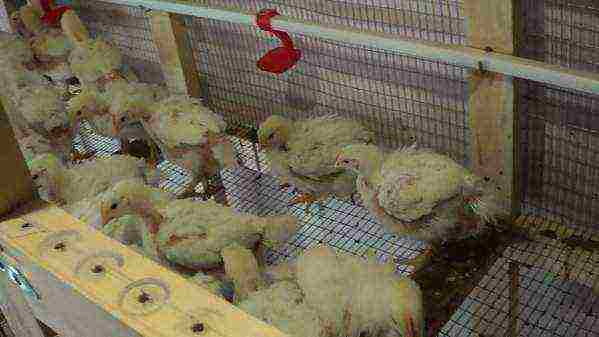 Organization of feeding of grown chickens
Organization of feeding of grown chickens
It is worth remembering that dairy products provide high value for babies... Instead of water, whey, liquid kefir can be poured into the drinker. On the third day, individuals can be fed with greens. For food, you can use plantain, clover, dandelion, nettle, biting. On the 5th day, green onions should be introduced. Green onions have a beneficial effect - they provide high protection for the body against various intestinal diseases.
Weekly
Individuals of one week of age can already begin to give a mixture of corn, barley, oat and wheat groats. The cereals are mixed in equal proportions - 1: 1.
Additionally, chopped herbs and dairy products can be added to the mixture. During this period, individuals can already be fed less often, but portions should be large. Up to 4-5 feedings should be received per day.
Period
From a month or more, chicks are released outside for walking. For this reason, the diet during this period is green. Through the use of herbs and other greens, individuals receive the vitamins necessary for their growing body.
Besides coarsely ground grain is introduced into the diet of individual layers... From a month and a half, adults should eat whole grains. You can give meat and bone meal and food waste.
How to determine the gender of a chicken: chicken or rooster?
In the egg
How to identify a chicken from a rooster in an egg? Not many poultry farmers will be satisfied when, after hatching, the percentage of males will be almost 80-90%. Therefore, in these cases, the method of determining the sex of a cock or a chicken by egg is used. It would seem that this task is difficult and almost impossible, but this is far from the case.
To determine the sex of the egg, recommendations will help:
- First you need take an egg in your right hand, while the sharp end of the egg should be directed upwards;
- Further run your left finger along the top of it;
- If a ring and tubercles are observed at the upper end, then these criteria indicate that a cockerel will appear. If the top of the egg has a smooth structure - a chicken.
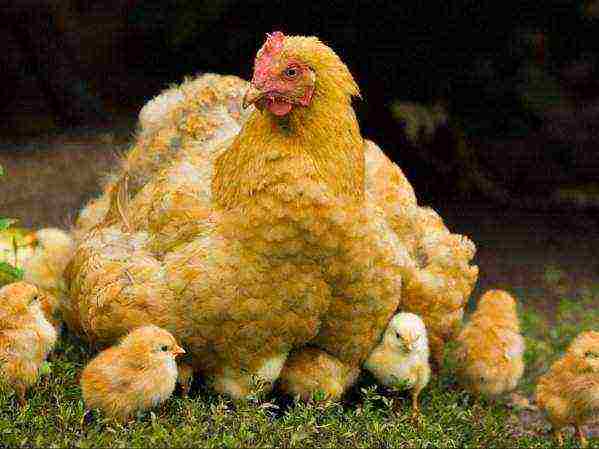 Hatching chicks with a brood hen
Hatching chicks with a brood hen
At day-old
How to distinguish a chicken from a cockerel at one day of age? At one day of age, sexual characteristics do not appear at all clearly, so it is quite difficult to determine the sex. Females usually have more luxuriant plumage., but males, on the contrary, are scarce, in some places they can be without fluff.
At 2 months
How to tell a rooster from a chicken at 2 months old? At this age, gender can be determined using several methods:
- By plumage... Individuals with abundant plumage are females, and those with poor plumage are males;
- By this age, the cockerels have a comb, the beard turns red, and the face is rounded;
- In cockerels, legs become longer, spurs can already be seen on them;
- In males, overgrown plaits appear on the tail.
At 3 and 4 months
How to distinguish a rooster from a chicken at 3 or 4 months At the age of 3 months, sex determination of individuals is much easier, in roosters you can see the following external characteristics:
- The scallop becomes bright in color;
- The crest, beard and earrings become large;
- The legs become high;
- Spurs are already clearly visible on the legs;
- The tail has long braids.
Methods for determination in poultry farms
In addition to traditional methods for determining the sex of chickens, there are other methods that are commonly used in poultry farms. These methods help to determine the gender with the greatest probability.
Cytogenetic way
How can a cockerel be distinguished from a chicken by this method? This method is based on the determination of the age by the karyotype of the fast-acting cells of the feather pulp. Usually in males who are not even a month old, the Z chromosome acts as the longest metacentric.
In females, the number of these chromosomes is 10 times less; W-chromosomes - submetacentric - predominate in their bodies. If, during the analysis, it is found that the Z-chromosome is present in the body in a single copy, then this is a chicken, if there are a lot of these chromosomes, then a cockerel.
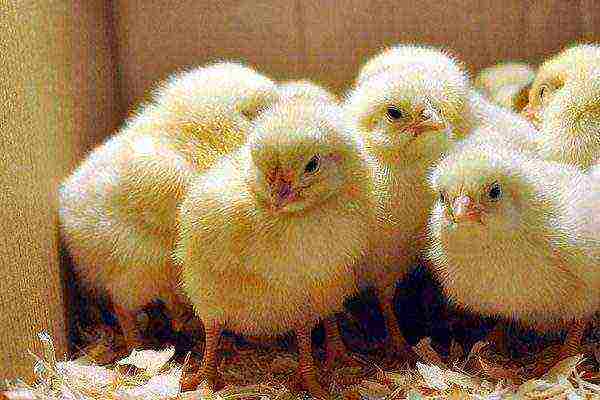 Sex determination of chicks by different methods
Sex determination of chicks by different methods
DNA
This method of how to distinguish chicks from females from cockerels allows you to determine the sex of the chicks with the greatest probability. It is based on blot hybridization of blood DNA with a primer.
The juvenile can be identified with high accuracy using the analysis of samples or whole blood, washed erythrocytes. The disadvantages of this method include high cost and labor intensity.
On the wings
Determining gender using this method:
- The first way is inspecting the color of the wings... At the age of 2-3 days, the wings of the chicks are examined - in males they are slightly lighter than in females;
- The second way is in counting feathers... It is necessary to pull the wing of the chick and spread it. Chickens fledge first, for this reason 6-7 primary feathers are large in size, unlike others. But males have all the same feathers.
To size
The sex of the chicks is determined depending on their size. Typically, a high-precision balance is used for this method. If an individual has a large enough mass for its age, then it is a cockerel. If the mass is small, then this is a female. Usually the difference in weight is about 5 grams.
How to tell the sex of a hen by color?
Determination of sex by color of plumage is mainly used for purebred individuals:
- Running shoes... At about the age of 1 day, sexual characteristics are determined: beige is typical for females, and white for males;
- Autosex breeds... Chickens have monochromatic colors - gray, white, black, and males have stripes;
- Brahmas... Females have distinct stripes on the back and points on the head. Males also have stripes and dots, but they are slightly blurred;
- Rhode Island and New Hampshire breeds. On the second day after hatching, dark spots and stripes can be seen on the head of females; males do not have these characteristics;
- Adler silver. Females are yellow in color, and males are lemon with a black stripe on their heads.
Japanese method
This method of sex determination of chicks is used in many poultry farms. The accuracy of this method is almost 95%. However, to implement this method, you need to have special skills.
Before you start sex determination using this method, you should understand the structure of the chicks' genitals and find out their differences.
Males can be separated from females by detecting a tubercle in the anus, which is absent in future chickens:
- First of all, the chick's cloaca is cleaned of traces of droppings;
- Next, the individual should be taken in the palm of your hand, turned over, paws apart so that the cloaca is clearly visible;
- The hole must be pushed apart, at the same time you need to press on the abdomen. As a result of these manipulations, the internal structure of the cloaca will be clearly visible.
External differences between the cloaca of females and males:
- In females, the cloaca looks like a neat nodule without bulges;
- In males, a genital tubercle is quite often found.
To avoid unpleasant consequences, this method should only be carried out by an experienced poultry breeder or farmer.
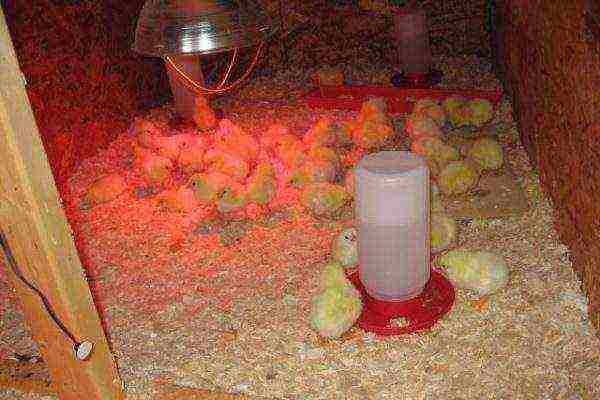 Arranging a place for newly hatched chicks
Arranging a place for newly hatched chicks
Reflex
how to distinguish chicks by sex using this method? This gender determination method is performed in two ways:
- You should take the chick by the scruff of the neck and look behind the legs for a while. Usually chickens are trying to curl their legs, and clench the claws. At the same time, it raises the paws a little. And the bettas, on the contrary, do not twist their legs, and do not move them, they hang in an even position;
- You can, on the contrary, take the chick by the legs and look behind the position of the head. Chickens usually lift their heads up., and the cockerels, on the contrary, hang without moving.
How to distinguish a cock from a chicken by voice?
Usually this method is used by the Orpington and Cochin peoples. The voice of males is the most coarse, similar to a quack. In females, on the contrary, the voice is softer, they mostly squeak. This method does not always allow you to accurately determine the sex characteristics of individuals. It is mainly used by experienced poultry farmers.
How do you determine your age?
Usually the age of chicks is determined by the plumage. It is advisable to remember the features of plumage depending on age:
- Between 8 and 12 days of age, feathering appears in the shoulder area;
- In the period from 12 to 16 days, feathers appear on the crop and breast;
- In chicks of three weeks of age, the first molt is observed, while all the fluff falls out of the tail;
- At the end of the fifth week, flight feathers grow, and feathers appear on the back of the body;
- At six weeks of age, the head and lower body are covered with a feather;
- Full plumage is observed at the age of 3 months.
Diseases of chickens
Chickens, as well as chicks of other bird species, are susceptible to various diseases. The following diseases are most common:
- Avitominosis;
- Poisoning;
- Digestive disorders;
- Salmonellosis;
- Coccidosis;
- Typhus and many others.
In order to properly treat diseases, it is worth knowing what symptoms are characterized by diseases in chickens.
Diarrhea in chickens
Why broilers vilify chickens is sometimes quite difficult to figure out. Below, let's try to figure out and understand all the reasons for this phenomenon.
White diarrhea in broilers: can it be cured?
Quite often, chickens develop white diarrhea. It is also called pullorosis. This disease usually occurs in an acute form and quickly affects the fragile intestines of chickens. The causative agent of this disease is a bacillus called salmonella. The disease usually spreads at a high rate, in a few days almost all birds can get sick.
 White diarrhea in broiler chicks
White diarrhea in broiler chicks
How to cure diarrhea in chickens? For prophylaxis, you need to clean the room of debris, disinfect everything. It is also imperative to check the room temperature and ventilation.
Recovered individuals are subject to destruction. Meat from sick birds should not be eaten.
Yellow diarrhea in broilers: why it occurs and how to treat it?
This diarrhea can occur during infectious diseases, as well as if the conditions of detention are not observed. Sometimes yellow droppings are seen in Gumboro disease. In these cases, an examination and testing are carried out.
Besides yellow diarrhea can result from stress, hypothermia, due to poor quality feed. In these cases, folk remedies are used for treatment and the premises are disinfected.
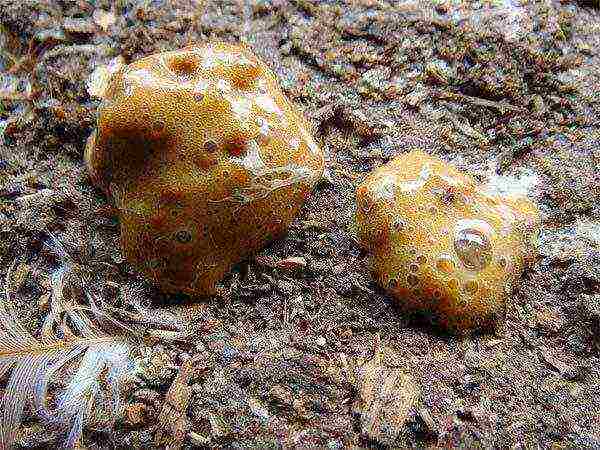 Yellow diarrhea in chickens
Yellow diarrhea in chickens
Bloody diarrhea in chickens: a symptom of what diseases?
Bloody diarrhea usually occurs with coccidiosis. This disease is dangerous and often leads to the death of the entire bird population. This disease occurs due to poor hygiene, namely, untimely cleaning of the room. This disease affects the intestines. In addition to diarrhea, the following conditions are observed:
- Loss of appetite;
- Lethargy, inactivity;
- Tousled plumage;
- Impurities of blood and mucus appear in the droppings.
How to treat if chickens have bloody diarrhea? For treatment and prevention, it is necessary to clean and disinfect the room in a timely manner, vaccinate and give the appropriate chemicals.
Light brown diarrhea in broiler chickens and its treatment
Broilers have brown diarrhea with eimeriosis. This disease is caused by various parasitic protozoa that accumulate in the intestines of chickens or hens. Infection usually occurs through food, dirty bedding, gadfly.
Symptoms of the disease:
- Individuals sit in one place with closed eyes;
- Tousled plumage;
- The wings are hanging to the floor;
- Lack of appetite;
- Brown diarrhea with mucus.
The disease is determined during the study. Treatment is best done at an early stage. For treatment, drugs are used - coccidiostatics.
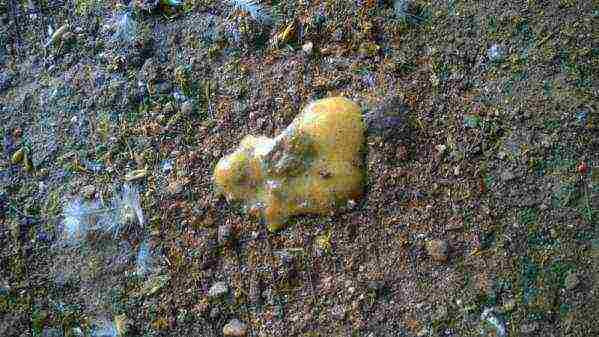 Light brown diarrhea in chickens
Light brown diarrhea in chickens
Chickens vilify green
Green diarrhea can occur with pasteurellosis disease. In this case, examinations, analyzes are carried out. If the diagnosis is confirmed, then appropriate treatment is prescribed.
In the absence of pasteurellosis, green diarrhea can cause poor-quality expired feed. In this case, the treatment is carried out using adsorbing agents (activated carbon). Suspicious feed must be disposed of and only high quality feed provided.
 Green diarrhea in chickens
Green diarrhea in chickens
Worms
Chickens often have such an unpleasant disease as helminthiasis. This condition poses a particular danger, and in almost 50% of cases, if not treated promptly, it leads to death. Signs of worms in chickens are severe emaciation.
The main danger of this disease is that it affects all individuals in the same room. Worms are excreted together with the droppings of affected individuals and, together with food, enter the body of healthy individuals.
What to do if chickens develop worms? In order to save the entire population of birds, you need to plant infected chicks in time, clean the room, remove all bedding and disinfect everything. Infected individuals should be given antihelminthic drugs and nutritious food. Medicine for worms in chickens should be given as early as possible.
Disease prevention
Preventive measures for various diseases of chickens include the following recommendations:
- Timely cleaning and disinfection of the premises saline solutions, caustic soda, bleach;
- Compliance with the density of livestock in the poultry house. It is desirable that the number of chicks in one room be moderate;
- Quality feed with a high nutrient content;
- It is imperative to equip the ventilation of the room;
- Compliance with the temperature regime of the room;
- Soldering birds with drugs against infectious diseases;
- Timely vaccination.
Breeding chickens is a laborious process that requires a lot of responsibility. In order for the livestock to be healthy, it is imperative to follow all the rules of keeping. The main condition for the full growth and development of chicks is care and attention!
Now you know how to raise chickens at home, how to treat chickens, what to do if chickens develop worms, and how to treat diarrhea in chickens and adults. Follow all recommendations and watch out for chicks.
And a video on how to feed chickens:
